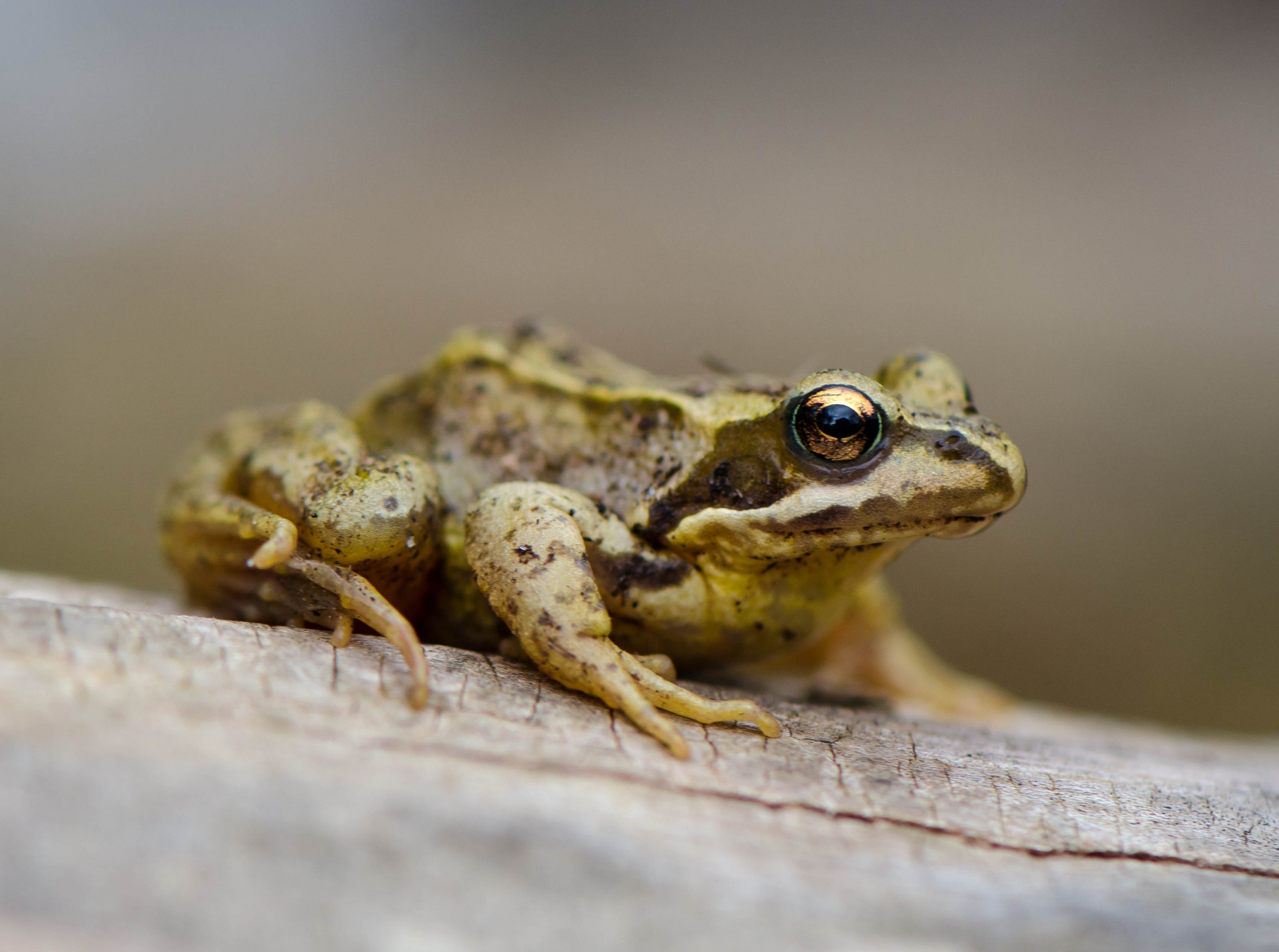The common frog is known as our most familiar amphibian in Scotland, but with increasing threats this species may not be quite so common. Unfortunately, common frogs are reported to be in decline and we urgently need more monitoring data across Scotland to better understand population trends. Common frogs can be found in almost any habitat where suitable breeding ponds are nearby. Garden ponds are extremely important and many populations in suburban areas depend on them. They feed on a variety of invertebrate prey including slugs and snails, which makes them popular with gardeners! Spawning takes place during early spring and tadpoles take up to 16 weeks to metamorphose into tiny froglets. Adults can grow up to 9cm long and are often found close to freshwater in habitats that remain damp throughout the summer. Outside of the breeding season, they can roam up to 500m away from breeding ponds.
Action Needed
- To engage communities and householders to get actively involved in creating a space for nature, and specifically amphibian-friendly ponds and safe hibernation areas for common frogs.
- To encourage land managers to create, enhance or safeguard amphibian-friendly ponds, insect-rich habitat and hibernacula.
- Promote the monitoring of amphibians, including common frogs, to improve our knowledge and better understand their population trends in Scotland.
- Raise awareness of threats to amphibians, in particular common frogs, using community science data to establish population trends and inform conservation action.
- Help promote action to reduce the impacts of climate change.
- Ensure the Scottish Biodiversity Strategy is fully implemented.
Threats
- Loss of ponds
- Habitat degradation and fragmentation
- Loss of insect-rich habitats
- Climate change impacts (e.g. ponds drying out during the breeding season)
MSP Nature Champion

Shirley-Anne Somerville
Member for: Dunfermline
Region: Mid Scotland and Fife
Party: Scottish National Party


